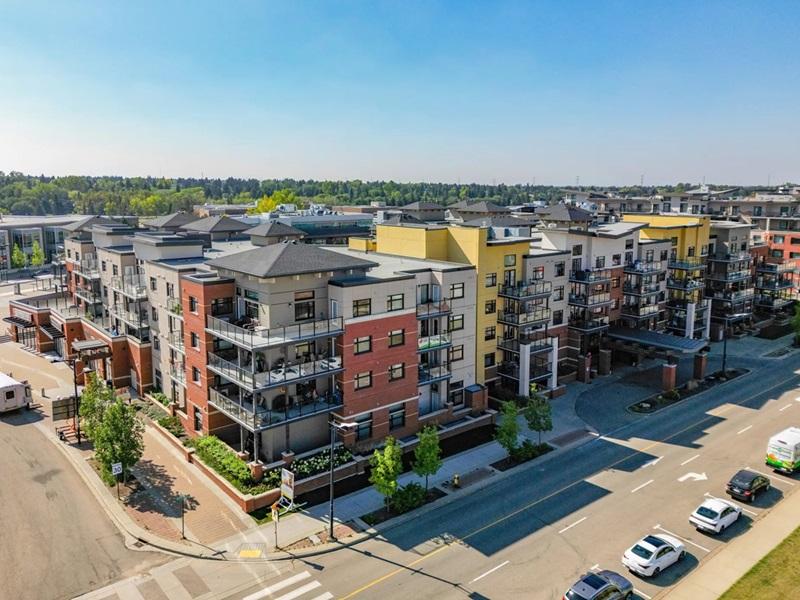GUEST COLUMN: For property managers, there’s a lot to think about when it comes to sheltering in place; also, in particular, how to make sure residential properties and the people within them continue to stay safe, healthy and resilient.
But what is resilience in the multifamily residential space – why does it matter and how can we promote it?
Resilience itself is the capacity of a community or business to prevent, withstand, respond to and recover from a disruption.
In the instance of the COVID-19 pandemic, the need for resilience strategies – for both our buildings and our occupants – has become more critical than ever. Unexpected strains and stresses can threaten both our physical and mental well-being.
When it comes to developing effective, building-wide resilience strategies, there are a few considerations to keep in mind:
* multifamily housing should keep occupants safe and healthy;
* resilience should be a regular part of the capital improvement planning process;
* smart resilience investments can help save on energy use, reduce operational expenses and lower insurance premiums.
The benefits of building resilience
As those responsible for buildings recognize their roles in supporting building and occupant resilience, it requires a closer look at decisions including enhancing communication channels, rethinking technology and even reimagining the way common spaces are designed and used by occupants.
Sometimes we forget how much living within the same four walls can impact our overall health and wellbeing.
In fact, data from the Fellowes Workplace Wellness Trend Report shows things like physical design, comfort, and operations flow can impact how we work, feel and act.
People who work in clean, organized spaces with natural features (like increased indoor plants and natural light) reported 15 per cent higher levels of overall well-being, six per cent more productivity and 15 per cent more creativity.
It just goes to show a resilient, well-planned space matters to our welfare. Likewise, a consistent feeling of comfort throughout a property can help in the recovery from disruptive situations.
For example, a year ago, Canadians living in multifamily buildings would have rarely, if ever, considered entertaining, living and working 24/7 from the confines of their homes. Now, the limited spaces in our homes host our entire lives.
It begs the question how do we adapt in such close quarters in order to ensure we have all of the things we need for basic comforts?
Proptech systems help maintain well-being
Are our buildings equipped to respond to shocks and stressors, such as climate change or future lockdowns?
Building managers, operations teams, and residential building communities which have faced these challenges during the past year might want to consider what property technology (proptech) can do to maintain the well-being of their buildings and the communities within.
PropTech is the application of information technology in real estate. Motivations for installing proptech into a residential building might include reducing energy waste, improving service operations or improving occupants’ sustainable behaviour within a building.
With occupancy rates increasing thanks to national and regional lockdowns, there is a growing demand to make indoor spaces more welcoming and comfortable for the long term.
In fact, in a recent PwC survey on 2021 real estate trends, the new non-negotiables for multifamily real estate include healthy-home functionality like indoor air quality, room air comfort, and water filtering and purity . . . all of which are important to help the building community prosper with a little help from proptech.
For example, with most of a building’s occupants working from home full-time, they notice the hot water doesn’t warm up quickly enough when they make a midday cup of tea. The more they hear about it, the more property managers and board representatives alike will want to address this issue.
By installing smart technology in the boiler room, the software can detect a malfunctioning/underperforming heat pump. The technology can then remedy the problem, alert the manager and ensure hot water delivery remains consistent, all from one central location.
Introducing technology to merge the hardware (boiler room, heat pump) and the soft systems within a building (managers, occupants, the building community) allows the entire building network to work together in harmony, remaining balanced and stable.
Offering comfort in a difficult time
The result is occupants experience an increase in indoor living quality, increased satisfaction with their environment and overall better interaction with the building community around them (i.e. hearing from the building manager right away because the software raised the concern first).
Why this translates into resiliency is because the occupant now feels a sense of consistent service delivery without any disruption even when they are anchored to their home.
When individuals and families are navigating a situation as stressful as the COVID-19 pandemic, this lack of additional frustrations is an important way buildings can support occupants during a difficult time.
Managers and property owners will also need to adapt and respond quickly to occupant needs in order to keep the community happy and satisfied.
Occupants will likely demand more flex space, nimble responses to their issues, enhanced security and improved connectivity.
With that said, managers have a more involved task at hand; continue to inform with care and empathy in times of uncertainty.
Proptech softwares can help managers streamline their messaging through online message portals, promptly respond to occupant needs and in turn help occupants feel a sense of attention and interconnectivity.
Residential properties that will survive in this time will be the boards, occupants and managers who choose to prioritize resilient communities throughout their operations.
Those that will weather the stressors like climate emergencies or pandemics will be the building communities which embrace change, even if that means including new and evolving technology into those plans.
Brad Pilgrim is the CEO and CoFounder of Parity Inc. Over the past three years, Brad has led Parity Inc. to develop and deploy an AI-powered energy management platform for multiresidential buildings in order to eliminate energy waste in buildings and cultivate more sustainable urban environments.







